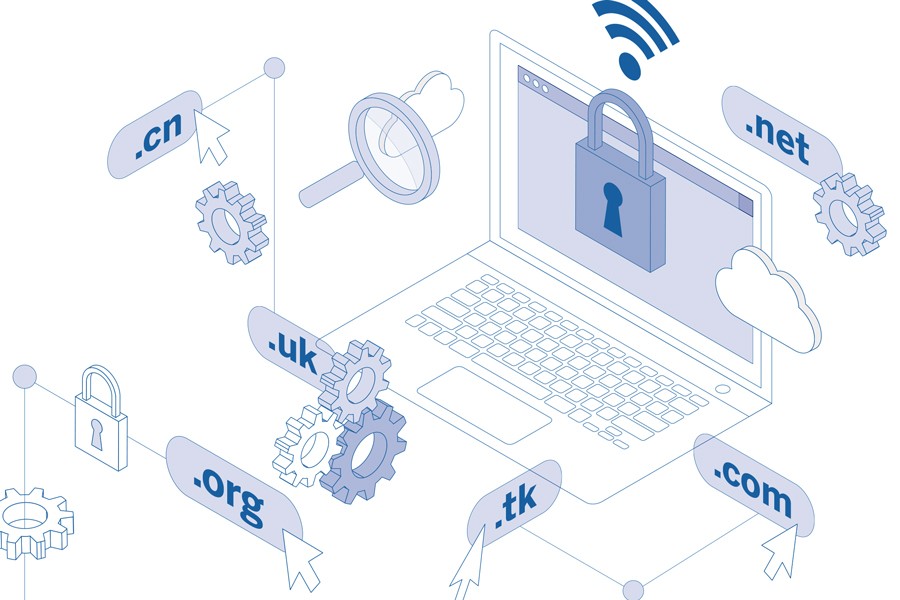If you hadn’t tried online grocery ordering pre-pandemic, I’d guess you or a close family member may have trialled an online delivery service or, perhaps, an online to offline click-and-collect service instead of braving the queues at your local physical supermarket.
The pandemic has, undoubtedly, accelerated the need for companies to consider their digital strategy – a highly consensus opinion. Yet, much focus is placed on the excitement of evermore e-commerce and the potential of a digital metaverse, meaning opportunities at the Internet’s core, that should grow from rising digital penetration, are often overlooked.
This led me to think about internet utility operators. Unlike traditional physical utilities, digital utility firms seem to offer higher long term growth potential as well as benefiting from a relatively more embryonic regulatory framework that struggles to keep pace with rapid digital innovation.
To explore this, let’s look at a foundational infrastructure layer of the internet; the domain name system (DNS). It’s essentially a large database akin to a traditional phone directory that maps human comprehensible alphabetic website domains e.g. jmfinn.com into a numeric internet protocol (IP) address to tell your computer where to find the JM Finn website. Clearly for us it’s easier to remember www.jmfinn.com but, remember computers prefer binary.
The DNS is a worldwide network of servers (i.e. computers). Importantly, DNS is a hierarchical and distributed network. Each level of the DNS system only knows a small amount of information to resolve a domain name query – essentially enough information to pass the query request to the next level down the hierarchical architecture.
At its core, DNS is made up of 13 authoritative root zone servers. These specific servers know exactly where to find top level domain (TLD) servers; examples include .com, .co.uk or .gov. The .com TLD server knows where to look for .com addresses; not .co.uk addresses.
To find a website domain, a computer iteratively speaks to numerous hierarchical DNS servers to ultimately find a website’s unique IP address. This may seem a highly convoluted process. But, it delivers a highly efficient website address look-up function, benefiting from several levels of redundancy to ensure we are accurately routed to websites of choice quicker than we blink.
A company intrinsically linked to DNS is Verisign, the world’s leading internet domain registry operator. In simple terms, Verisign maintain the website address books or supporting infrastructure for a number of TLD registries: .com, .net, .cc, .tv, .gov, .jobs, .edu and .name.
Specifically for .com, .net and .name, Verisign has monopoly status as it has the single exclusive license to maintain and update these registries under strict agreements from the Internet Corporation for Assigned Names and Numbers (ICANN) and, additionally for .com, the US Department of Commerce.
Whilst Verisign operates in a highly technical sphere – if we take .com as a case study - Verisign generate revenue every time a website domain on .com is either registered or renewed (annually). So, the basic underlying revenue drivers are: growth in .com website domains and pricing.
Currently, for the 157m website domains on .com (Q2 2021), Verisign charge an annual fee of $7.85 for each domain registered or renewed. This pricing is strictly governed by ICANN. Currently, Verisign can enact a maximum 7% annual price hike on the .com TLD in the final four years of each six year licencing period.
So, with pricing growth tightly bound, the key variable element of Verisign’s revenue growth seems to boil down to volume growth of .com websites. Therefore, if you think more businesses create a .com presence, post pandemic, then you might forecast higher revenue growth ahead.

Early in the Internet’s history, limited TLDs gave .com a significant (<90%) market share of website domains. However, many analysts highlight how .com’s share has slid to c. 40% today following the broadening of country level domains (.co.uk) and generic introductions like .shop.
I’m optimistic on .com prospects because, whilst TLDs have proliferated, .com retains its iconic cachet. I see .com as an intangible brand, favoured by businesses through their insistence on a .com domain. Moreover, if you appropriately analyse where websites store their content, versus non-content domains (that instead principally auto-forward you to the .com content domains), you realise .com retains the lion’s share.
However, a potential risk to Verisign’s .com volume growth narrative may emanate from online marketplaces that thrive on the .com TLD. Amazon.com or Etsy.com who theoretically require just a single .com domain to pull individual sellers to their sites – reducing small businesses needs for separate .com websites!





